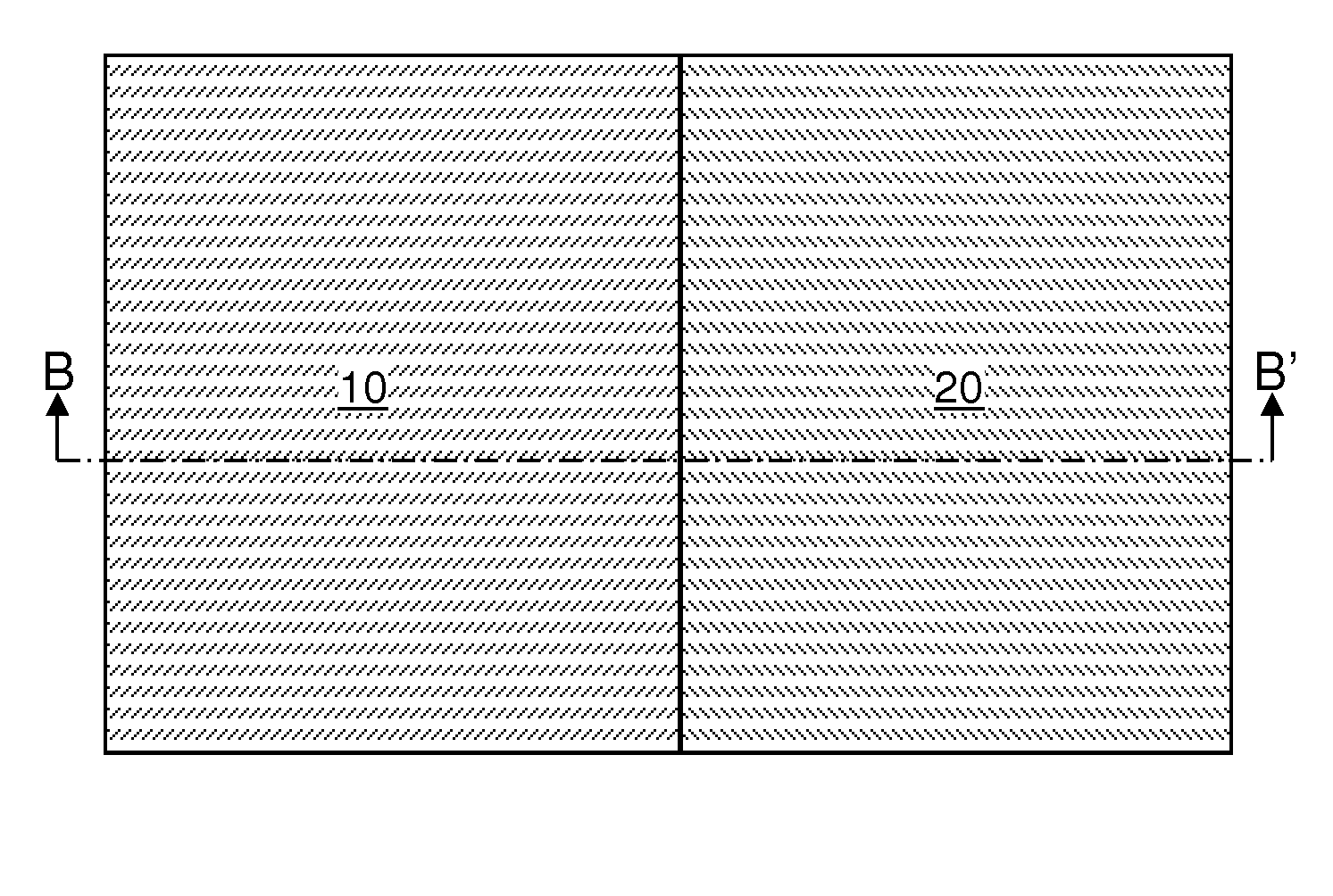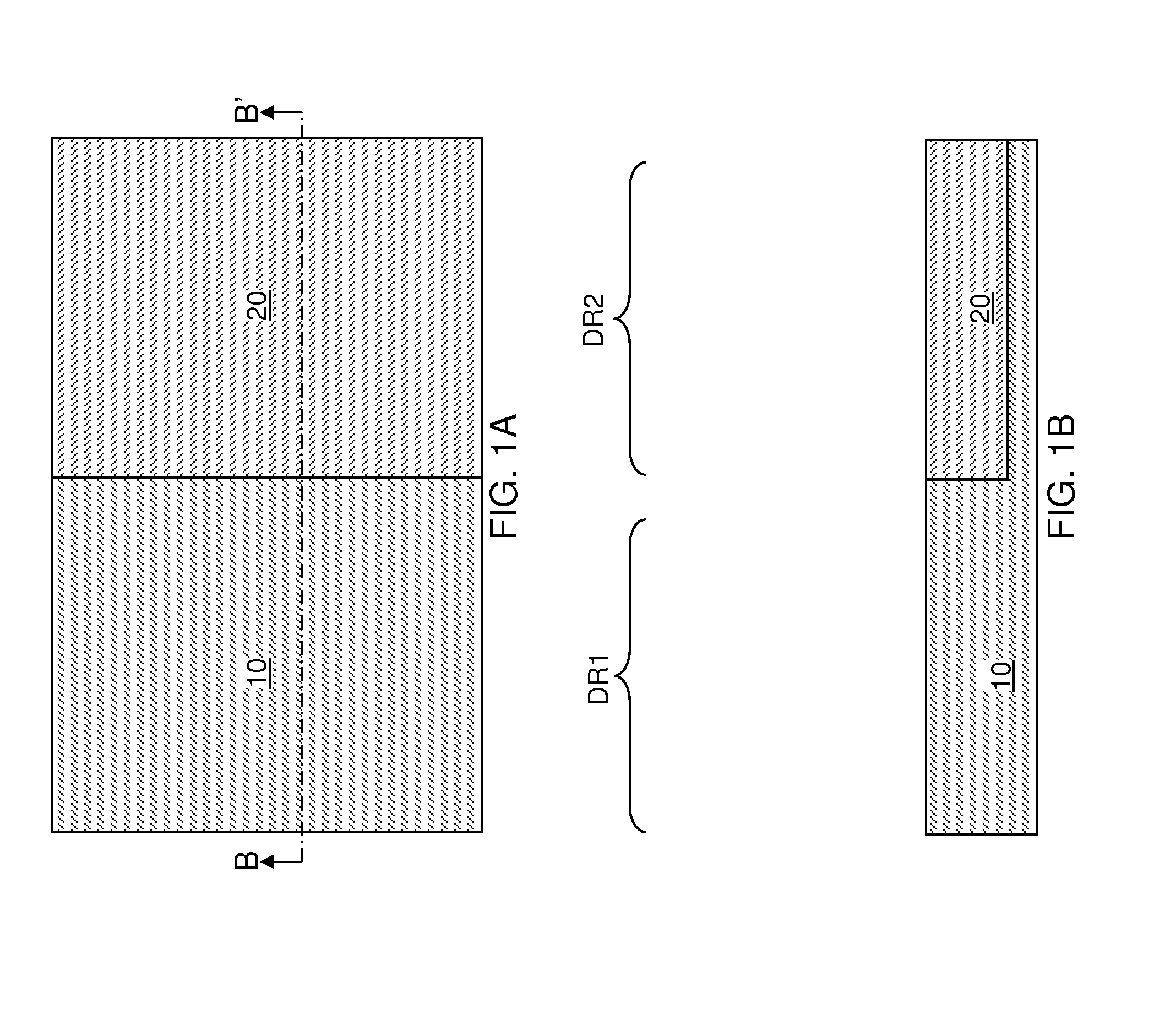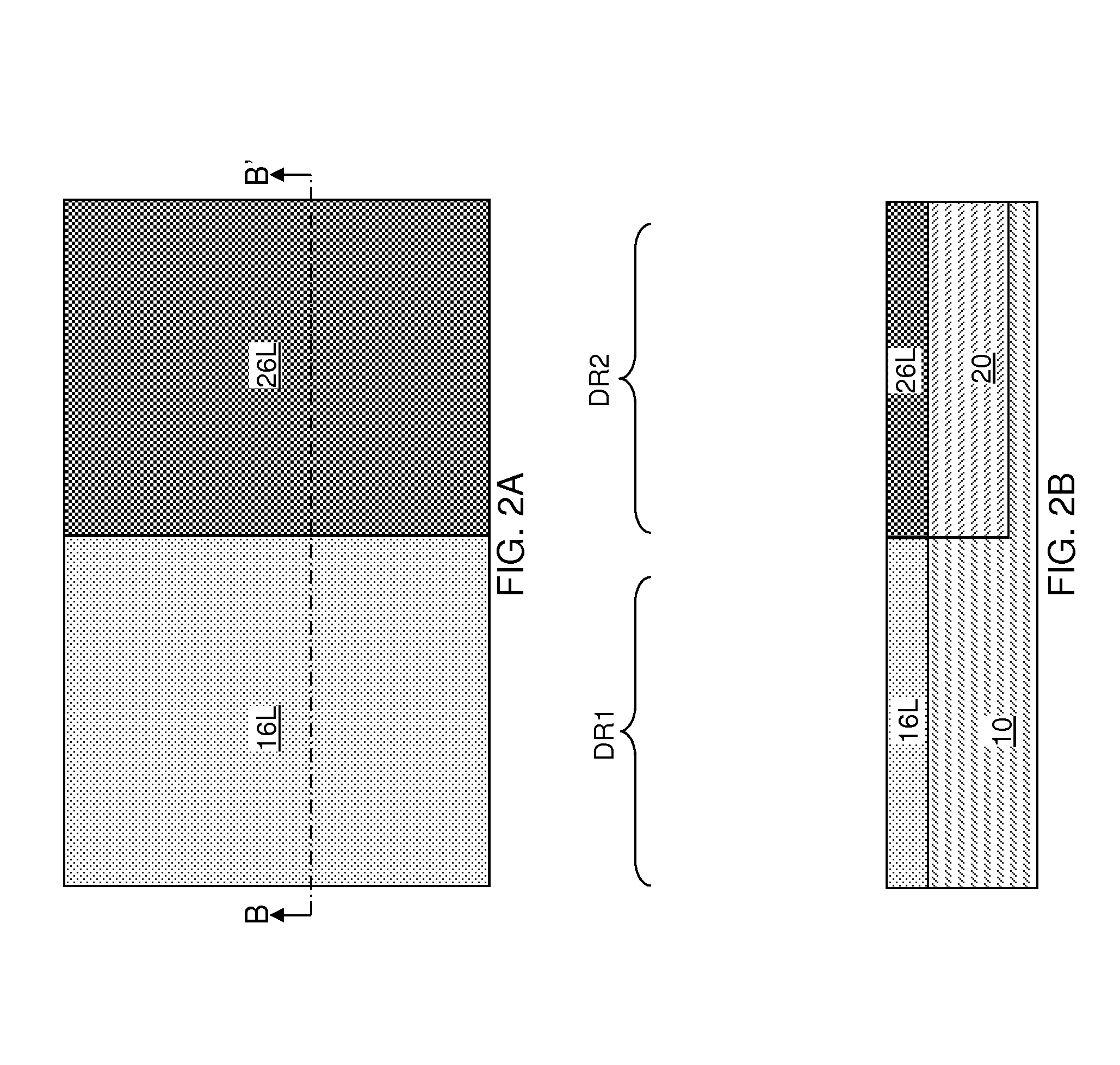Semiconductor fin isolation by a well trapping fin portion
a technology of semiconductor fins and well trapping fins, which is applied in the direction of semiconductor devices, basic electric elements, electrical equipment, etc., can solve the problems of additional processing steps, soi substrates are not generally compatible with the use of stress-generating embedded semiconductor materials, and the device formed on a semiconductor fin on a bulk semiconductor substrate suffers from leakage currents
- Summary
- Abstract
- Description
- Claims
- Application Information
AI Technical Summary
Benefits of technology
Problems solved by technology
Method used
Image
Examples
first embodiment
[0051]Referring to FIGS. 1A and 1B, a first exemplary semiconductor structure according to the present disclosure includes a bulk semiconductor substrate including a first semiconductor material throughout. The first semiconductor material can be, for example, single crystalline silicon, a single crystalline silicon-germanium alloy, or a single crystalline silicon-carbon alloy. The bulk semiconductor substrate includes a first semiconductor material layer 10, which can have a p-type doping or an n-type doping. In one embodiment, a doped well 20 can be formed in an upper portion of the bulk semiconductor substrate such that the doped well has a doping of the opposite conductivity type relative to the doping of the first semiconductor material layer. For example, if the first semiconductor material layer 10 has a p-type doping, the doped well 20 has an n-type doping, and vice versa. The doped well 20 is a first semiconductor material portion, i.e., a portion including the first semico...
second embodiment
[0093]Non-selective or selective epitaxy can be employed to form the silicon-germanium alloy layer of the In one embodiment, the silicon-germanium alloy layer can be formed as an intrinsic (undoped) single crystalline silicon-germanium alloy layer. The silicon-germanium alloy layer can have an atomic concentration of germanium in a range from 1% to 80%, the atomic concentration of silicon being the balance. The thickness of the silicon-germanium alloy layer 26L can be in a range from 10 nm to 100 nm, although lesser and greater thicknesses can also be employed. The material of the silicon-germanium alloy layer 26L, i.e., the silicon-germanium alloy, is the second semiconductor material for the first device region DR1 and the second device region DR2.
[0094]N-type dopants are introduced into the portion of the silicon-germanium layer in the first device region DR1 employing a masked ion implantation process. P-type dopants are introduced into the portion of the silicon-germanium allo...
PUM
| Property | Measurement | Unit |
|---|---|---|
| thicknesses | aaaaa | aaaaa |
| thicknesses | aaaaa | aaaaa |
| thicknesses | aaaaa | aaaaa |
Abstract
Description
Claims
Application Information
 Login to View More
Login to View More - R&D
- Intellectual Property
- Life Sciences
- Materials
- Tech Scout
- Unparalleled Data Quality
- Higher Quality Content
- 60% Fewer Hallucinations
Browse by: Latest US Patents, China's latest patents, Technical Efficacy Thesaurus, Application Domain, Technology Topic, Popular Technical Reports.
© 2025 PatSnap. All rights reserved.Legal|Privacy policy|Modern Slavery Act Transparency Statement|Sitemap|About US| Contact US: help@patsnap.com



